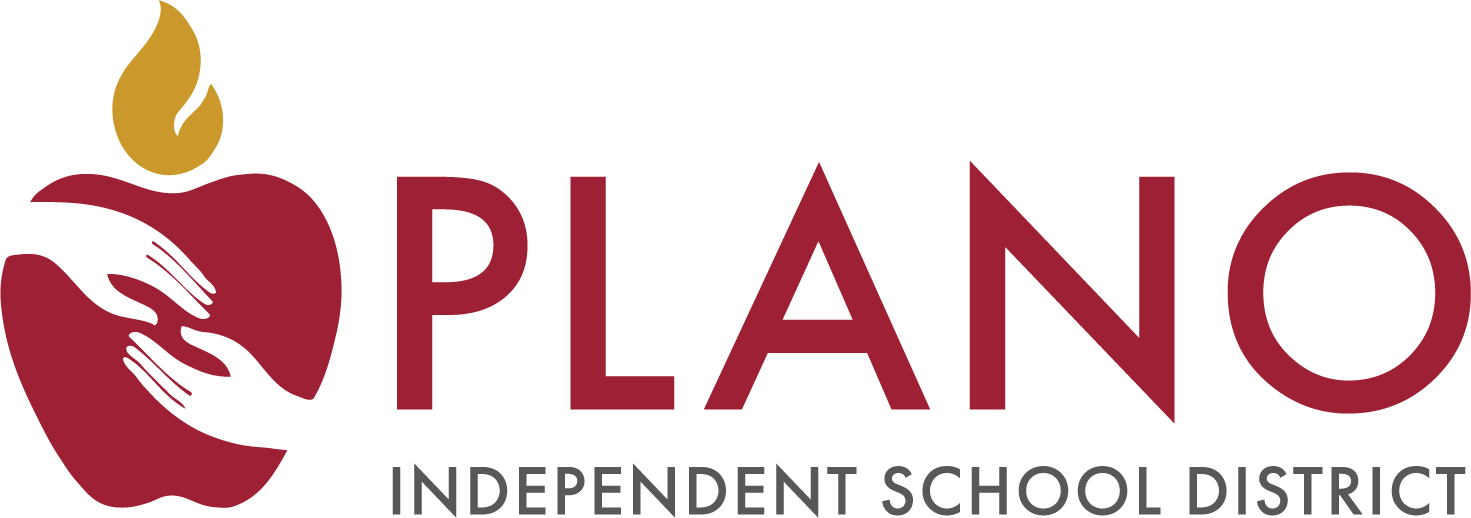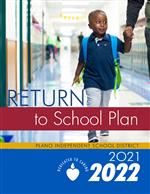Financial Services
Page Navigation
- Plano Independent School District
- ESSER III Plan
-
ESSER Information
Elementary and Secondary School Emergency Relief Funding
The intent and purpose of the American Rescue Plan (ARP) of 2021, Elementary and Secondary School Emergency Relief (ESSER III) funding is to help safely reopen and sustain the safe operation of schools and address the impact of the Coronavirus pandemic on students.
With an allocation of $43,233,143, Plano ISD applied for this one-time funding in the following areas:
- Return-to-school activities and wraparound services to meet the needs of students, with an emphasis on academic needs and student wellness supports
- Programs and activities to support College and Career Readiness and Career and Technical Education
- Evidence-based activities to address learning gaps for students and summer learning programs
- Training and professional development for staff
- Technology resources to enhance online learning for all students
- Wraparound assistance for parents and families to effectively support students
- School facility repairs and improvements to mitigate environmental health hazards, and to support student health needs
Stakeholder Outreach
-
To help Plano ISD determine how to prioritize potential ESSER III funds, all parents, district employees, students and community members were invited to take a survey. This survey opportunity was shared through multiple communications channels, including the district website, campus websites, social media and email. Stakeholders identified these top three priorities: (1) additional school-day support for reading & writing; (2) additional school-day support for mathematics skills and (3) curriculum support in ELAR, math, science and social studies. The following ESSER update, including a summary of the community survey results, was shared at the June 22, 2021 School Board Meeting.
-
Return to In-Person Instruction & Continuity of Services Plan
Plano ISD welcomed students back to school on August 11. Despite the challenges with COVID-19, our district continues to provide an excellent education to our students. The focus on the health, safety and the well-being of our staff, students and community will remain a priority, and as such, Plano ISD provided a comprehensive Return to School Plan to families, which includes health and safety protocols and a framework for on-campus instruction. Plano ISD followed recommendations for school opening and operations provided by the Centers for Disease Control and Prevention (CDC), the Texas Education Agency and the Collin County Health Services Department. The situation with COVID-19 is continuously changing, as are the protocols and measures needed to keep students and staff safe. Plans will remain flexible to accommodate potential changes and these guidelines may be modified as needed. For families who expressed interest in attending school remotely this school year, Plano ISD is piloting a Virtual Academy.
Frequently Asked Questions
-
What is the purpose of the ARP ESSER III funds?
The purpose of ESSER in general is to award subgrants to local educational agencies (LEAs), such as school districts like Plano ISD, to address the impact that COVID-19 has had, and continues to have, on elementary and secondary schools.
-
Who is eligible to apply for ARP ESSER III funding?
LEAs, including school districts and charter schools, that received a Title I, Part A grant in school year 2020-2021 are eligible and will receive allocations for the ESSER III grant.
-
How much funding is available to Texas LEAs?
$12,418,588,778 is available to the state. Ninety (90) percent, or $11,176,729,900, will be awarded to eligible LEAs per the ARP statute. Note that only 2/3 of the total state allocation ($8,279,059,186) is available at this time.
-
How do LEAs know their grant amounts?
Grant allocations are posted on the Grants Administration Entitlements page on the TEA website.
-
What is the formula for distributing ARP ESSER III funding to LEAs?
TEA must allocate 90% of its total ESSER III grant by formula to LEAs. TEA must determine each LEA’s ESSER allocation in proportion to the amount of funds the LEA received under Title I, Part A of the Elementary and Secondary Education Act of 1965 (ESEA) in the most recent fiscal year (2020-2021).
-
What is the funding period for ARP ESSER III grants?
Funds may be used for allowable activities from March 13, 2020 (with approved pre-award) through September 30, 2023. The Tydings Amendment will then apply and LEAs will have the standard 12-month carryover period for a total grant period of March 13, 2020, through September 30, 2024.
-
What are the federal requirements around the LEA ESSER III Use of Funds Plan?
The LEA must engage in meaningful consultation with stakeholders and give the public an opportunity to provide input in the development of its plan for the uses of ARP ESSER III funds. Specifically the LEA must engage in meaningful consultation with students; families; school and district administrators (including special education administrators); and teachers, principals, school leaders, other educators, school staff, and to the extent present in or served by the LEA tribes, civil rights organizations (including disability rights organizations) and stakeholders representing the interests of children with disabilities, English language learners, children experiencing homelessness, children in foster care, migrant students, children who are incarcerated, and other underserved students.
The LEA must provide its plan for the uses of ARP ESSER III funds in an understandable and uniform format; to the extent practicable, written in a language that parents can understand or, if not practicable, orally translated; and, upon request by a parent who is an individual with a disability, provide in an alternative format accessible to that parent.
The LEA program schedules to the ESSER III application, or a separate document containing all the information included in the program schedules, serving as the LEA’s plan for the uses of ARP ESSER III funds will be posted to the LEA’s website within 30 days of receiving its ESSER III Notice of Grant Award.
-
What are the allowable uses of the ARP ESSER III funds?
- Any activity authorized under ESEA, IDEA, Adult Education and Family Literacy Act, or the Carl D. Perkins Career and Technical Education Act of 2006
- Coordination of preparedness and response efforts of LEA with State and local public health departments, and other relevant agencies, to improve coordinated responses among such entities to prevent, prepare for, and respond to the coronavirus
- Activities to address the unique needs of low-income students, children with disabilities, English learners, racial and ethnic minorities, students experiencing homelessness, and foster care youth, including how outreach and service delivery will meet the needs of each student population
- Developing and implementing procedures and systems to improve the preparedness and response efforts of LEAs
- Training and professional development for staff of the LEA on sanitation and minimizing the spread of infectious diseases
- Purchasing supplies to sanitize and clean the facilities of the LEA, including buildings operated by the LEA
- Planning for, coordinating, and implementing activities during long-term closures, including providing meals to eligible students, providing technology for online learning to all students, how to provide guidance for carrying out requirements under IDEA, how to ensure other educational services can continue to be provided consistent with all Federal, State, and local requirements
- Purchasing educational technology (hardware, software, and connectivity) for students that aids in regular/substantive educational interaction between students and instructors, including low-income students and students with disabilities, which may include assistive technology or adaptive equipment
- Providing mental health services and supports, including through implementation of evidence based full-service community schools
- Planning and implementing activities related to summer learning, including providing classroom instruction or online learning during summer months and addressing the needs of low-income students, students with disabilities, English learners, migrant students, students experiencing homelessness, and children in foster care, and supplemental afterschool programs, providing classroom instruction or online learning, addressing the needs of low-income students, students with disabilities, English learners, migrant students, students experiencing homelessness, and children in foster care
- Addressing learning loss among LEA students, including low-income students, students with disabilities, English learners, racial and ethnic minorities, students experiencing homelessness, and children in foster care, including administering and using high-quality assessments, implementing evidence-based activities to meet the comprehensive needs of students, providing information and assistance to parents & families on effectively supporting students, and tracking student attendance and improving student engagement in distance education
- School facility repairs and improvements to enable operation of schools to reduce risk of virus transmission and exposure to environmental health hazards, and to support student health needs
- Inspection, testing, maintenance, repair, replacement, and upgrade projects to improve the indoor air quality in school facilities, including mechanical and non-mechanical heating, ventilation, and air conditioning systems, filtering, purification and other air cleaning, fans, control systems, and window and door repair and replacement
- Developing strategies and implementing public health protocols including, to the greatest extent practicable, policies in line with guidance from CDC for the reopening and operation of school facilities
- Other activities that are necessary to maintain the operation of and continuity of services in the LEA, including continuing to employ existing staff of the LEA to the greatest extent practicable




